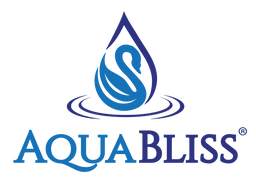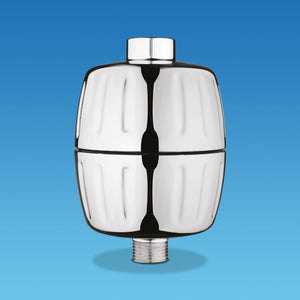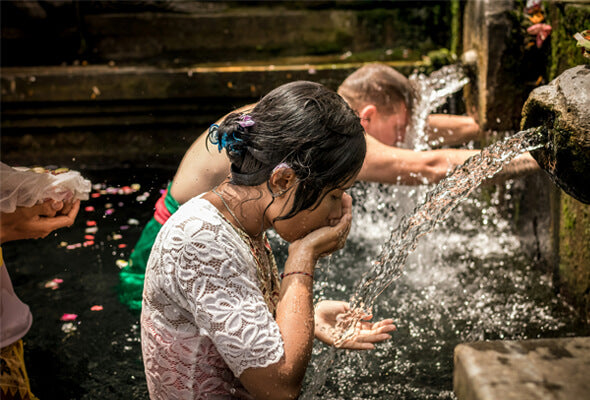Access to safe drinking water is a critical component of public health, but millions of people worldwide still consume contaminated water daily. This water contamination stems from various sources, including animal waste, industrial chemicals, and poor sanitation practices, leading to a range of waterborne diseases.
In this post, we’ll explore 13 diseases caused by drinking contaminated water, how they affect human health, and what you can do to protect yourself and your loved ones.
Understanding Waterborne Diseases and Their Impact
Waterborne diseases are infectious illnesses spread through drinking water contaminated with harmful bacteria, viruses, pathogens, or toxic chemicals.
Poor drinking water quality can lead to serious health complications, especially in regions with unsafe drinking water or inadequate community water systems. These diseases are particularly dangerous for those with weakened immune systems, such as children, the elderly, and pregnant women.
Contaminated water is not just an issue in developing nations—private wells and groundwater in rural areas, along with water pipes in aging urban infrastructure, can also be sources of contamination.
Climate change has further intensified water-related health risks by disrupting drinking water sources and causing more frequent flooding and contamination.
Common Symptoms of Drinking Bad Water

Consuming contaminated food or water often leads to gastrointestinal distress, but specific symptoms can vary depending on the disease-causing microbes involved.
Common symptoms of drinking water contaminated with harmful substances include:
-
Diarrhea: A common sign of waterborne illness caused by microbes like E. coli and other bacteria.
-
Abdominal Pain and Stomach Pain: Common symptoms after consuming contaminated food or water.
-
Nausea and Vomiting: Frequent symptoms of infectious diseases related to unsafe drinking water.
-
Dehydration and Fever: Often accompany diarrhea and other gastrointestinal issues.
-
Fatigue and Weakness: General signs of a waterborne disease due to toxic chemicals or bacterial infections.
Chemical contaminants, like lead and arsenic, pose additional long-term risks, impacting the nervous system and possibly leading to kidney failure and other serious conditions. Maintaining drinking water standards is essential for protecting human health.
Common Contaminated Water Diseases
Here are 13 common waterborne diseases caused by drinking contaminated water or exposure to dirty water sources:
1. Typhoid
Typhoid is an infection caused by a type of Salmonella bacteria that can be potentially fatal if left untreated. The disease displays all the common symptoms of drinking bad water, such as:
- diarrhea
- vomiting
- headache
- stomach pain
- coughing
- weakness
- body pain
- high fever
Some people also develop rashes, but it’s rare. WHO estimates that a staggering 11-20 million people fall sick from typhoid fever each year.
2. Cholera

Cholera is a life-threatening disease caused by the Vibrio cholerae bacteria that affects the small intestines. It spreads through food and water that’s contaminated with feces but can easily be prevented with good hygiene and filtered tap water.
Common symptoms include:
- stomach pain
- severe diarrhea
- vomiting
- dehydration
- lethargy
3. Gastroenteritis
One of the most common waterborne infections, gastroenteritis is an inflammation of the intestines. It displays all the symptoms of drinking contaminated water such as:
- diarrhea
- stomach pain
- nausea
- vomiting
- fever
Even though it’s not a very serious disease in adults, it’s one of the leading causes of death among children in underdeveloped countries where access to healthcare is limited.
4. Dysentery
Dysentery is an infectious disease characterized by the inflammation of the intestines. It’s a severe form of gastroenteritis that can be caused by a number of bacteria, such as Campylobacter, Shigella, E. Coli, and Salmonella.
Common symptoms of drinking bad water contaminated with these bacteria include bloody or mucusy diarrhea, abdominal pain, and weakness.
5. Giardiasis
6. Legionnaires' disease
Legionnaires' disease is a type of severe, potentially life-threatening pneumonia that’s caused by the Legionella bacteria. Rather than by drinking, this infection is caused by inhaling droplets of contaminated water.
The bacteria are typically inhaled through AC units, showers, and diffusers. Symptoms of drinking bad water contaminated with Legionella bacteria include fever, chills, cough, and diarrhea.
7. Plumbism
When lead, a toxic metal, starts accumulating in the body, it causes a potentially fatal condition known as lead poisoning or plumbism. This can happen over months or years.
Symptoms of drinking lead-contaminated water include:
- neurological changes
- abdominal pain
- constipation
- nausea
- insomnia
- loss of appetite
Lead poisoning is known to cause developmental issues in children.
8. Salmonellosis
Salmonella is a common bacterium that can be found in food and water contaminated by feces. This bacterium is often the main culprit for food poisoning and is characterized by typical symptoms of drinking bad water, such as diarrhea, stomach pain, and fever.
Salmonellosis is not often a severe infection, and most healthy people recover quickly.
9. Cryptosporidiosis
Cryptosporidiosis is a type of diarrhoeal disease that’s caused by a microscopic parasite known as Cryptosporidium. The parasite is found in food and water polluted by stool and is known to be resistant to even chlorine disinfection, a major reason why it’s very commonly found in public pools.
Healthy people with cryptosporidiosis recover quickly, but immunocompromised people will require critical care.
10. Hepatitis A
Hepatitis A is a highly contagious waterborne disease caused by the hepatitis A virus. It spreads through contaminated food, water, and close contact with infected people.
Symptoms of drinking bad water contaminated with the hepatitis A virus include:
- abdominal pain
- weakness
- diarrhea
- fever
- nausea
- dark urine
- yellow skin and eyes
- loss of appetite
Hepatitis A can be easily prevented with a vaccine.
11. Polio
Polio or poliomyelitis is a severe infectious disease caused by the poliovirus that causes paralysis and other symptoms such as fever, fatigue, stunted growth, and more. This disease is also easily preventable with a vaccine.
12. Amoebiasis

Most water bodies in tropical regions contain a parasitic amoeba known as entamoeba histolytica which can infect the colon upon ingestion. The infection leads to severe diarrhea known as amoebic dysentery which is marked by bloody stool.
13. Arsenicosis
Prolonged exposure to water contaminated with arsenic can lead to arsenicosis. Symptoms of drinking bad water with arsenic include abdominal pain, vomiting, diarrhea, muscle cramping, and skin rashes. Long-term exposure eventually leads to death if it’s untreated.
According to WHO, approximately 140 million people drink water contaminated with arsenic above the provisional guideline value.
How to Protect Yourself from Diseases Caused by Drinking Contaminated Water
Preventing waterborne diseases requires vigilance about drinking water quality.
Here are some ways to protect yourself and maintain safe water standards:
-
Use Water Filtration: Installing home filtration systems or drinking bottled water can help reduce exposure to harmful contaminants. Filters like those from AquaBliss can improve drinking water standards in your home, removing bacteria, viruses, and toxins.
-
Practice Good Hygiene: Wash your hands, food, and cooking utensils with filtered water to avoid contamination.
-
Avoid Swallowing Water in Public Pools: Public pools, lakes, and rivers can contain harmful pathogens. Avoid swallowing water while swimming in these areas.
-
Be Cautious with Private Wells: If you rely on private wells, regularly test for contaminants and follow drinking water standards.
Final Thoughts on Staying Safe from Waterborne Diseases
Waterborne pathogens continue to threaten human health globally, with many cases resulting in severe illness or death, especially among vulnerable populations in developing nations. Understanding the dangers of drinking contaminated water and consuming contaminated food is crucial for staying healthy.
By practicing good hygiene, using reliable filtration systems, and remaining informed about water quality in your area, you can significantly reduce your risk of disease. At AquaBliss, we offer advanced water filtration systems that provide an extra layer of protection for your family’s health.







